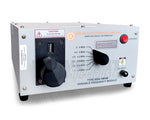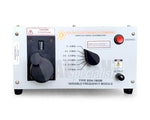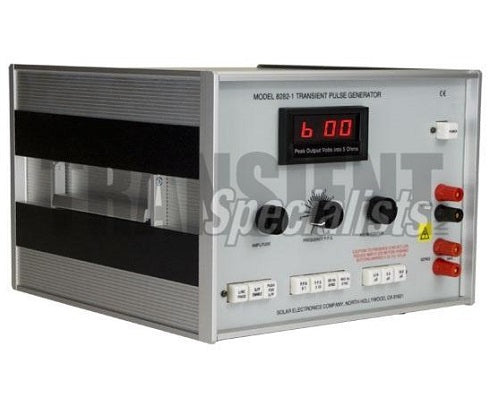Solar 8282-1
Included Accessories
Can't find something? Contact UsRelated Equipment
Overview
Spike generators required for susceptibility testing have been our specialty since 1962, when our first unit, the Solar Model 6254-1, was introduced. The Model 8282-1 incorporates all the flexibility and technical excellence of the previous models and provides features required by specification MIL-STD-461B/C.
Three different spike durations are provided: 0.15 μS, 5.0 μS, and 10.0 μS. The pulse shape approximates the curve of Figure 1 in MIL-STD- 462. The amplitude of the spike voltage is fully adjustable and is displayed on a digital meter.
In the series injection mode on 50, 60 or 400 Hz lines, a phase adjustment allows the spike to be positioned anywhere on the sine wave of the power line. This feature makes possible the injection of interfering transients at selected points in time to determine the susceptibility of systems which depend upon frequency or time.
The repetition rate of the spike can be adjusted with a panel control to any rate from 0.5 to 50 pulse per second. A single pulse can be injected with the aid of a panel-mounted pushbutton. All functions are selected by pushbuttons which are lighted when activated.
The Solar Model 8282-1 Transient Pulse Generator provides up to 600 V peak amplitude for each of the 0.15, 5.0 and 10.0 μS spikes. The output voltage rises steeply to peak amplitude as adjusted by the panel control, then falls exponentially to cross through zero at the duration of 0.15, 5.0, or 10.0 μS as selected by pushbuttons. The voltage falls below zero and "rings" for a period determined by the inductance in the output circuit or the load.
With series injection on 50, 60 or 400 Hz power lines, the spike can be applied to either the positive or negative half cycle of the power frequency sine wave. The spike can be adjusted to fall on the power sine wave from 0 to 360 . For non-synchronous injection, the repetition rate can be adjusted from 0.5 to 50 p.p.s.
A pushbutton enables the "single spike" feature and the spike can be manually triggered by pushing another button. A connector on the rear panel makes provision for remote triggering of the single spike feature.
Two methods of remote triggering are provided. One method requires the application of 24 V DC to trigger the pulse at rates determined by an external switch up to 550 pulse per second. The second method requires the application of a square wave which can be used to trigger the spike up to 50 pulse per second for the 0.15 μS spike and up to 1000 pulse per second for the 5.0 and 10.0 μS spikes. This latter feature can be used to trigger the spike in sync with some function within the equipment under test.
- Output Pulse:
- Charging voltage:
- Adjustable from 0 to about 2000 V
- Rise/fall time:
- Less than 2 ns
- Duration time:
- 35 ns
- Pulse repetition rate:
- 0.6 pulse per second to 150 pulse per second
- Polarity:
- selectable +/-
- Output load:
- 50 +/- j 0 Ohms
- Dimensions:
- 12.25 Inches wide x 8.7 Inches high x 13 Inches deep (31.1 cm x 21.1 cm x 33.0 cm)
- Weight:
- 27 pounds (12.24 kg)
- Shipping weight:
- 30 pounds (13.60 kg)

















 info@transientspecialists.com
info@transientspecialists.com